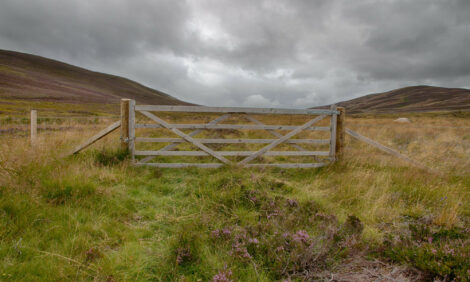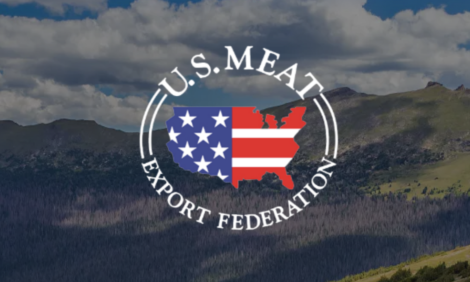



Veterinarians answer questions on influenza
With influenza A virus (IAV-S) in swine continuing to cause performance losses on US pig farms, veterinarians have taken up the mantle to find solutions. A thorough review devoted to IAV-S was held at the 2020 annual meeting of the American Association of Swine Veterinarians, culminating in a roundtable discussion. The session highlighted research advancements in control and diagnostics.Aaron Lower, DVM, shared the “prime-and-boost” strategy that Carthage Veterinary Service, Carthage, Illinois, is implementing with clients. Research supports the prime-and-boost strategy, Lower said. Instead of vaccinating with three or four strains and then coming back with the exact same three or four strains, prime and boost involves vaccinating the second time with a different combination of strains. Understanding strains in a given region involves “a lot of sequencing and trying to understand autogenous technologies” to achieve a successful program, he said. “We’re still seeing some breaks on farms, but the reproductive impact has been muted over the past 12 months.”
When asked if he’d seen any negative effects of prime-and boost, he said, “So far, it’s been relatively solid.”
Airborne risk
The panel members were asked about the airborne risk of influenza in farms that use filters.
“We’ve done some random sampling of filters that have been installed at sow farms to estimate how often the farms might be challenged by airborne pathogens,” said Montserrat Torremorell, DVM, PhD, a professor in the Department of Veterinary Population Medicine at the University of Minnesota.
“Influenza was higher than PRRS, and it was detected in approximately 70% of the filters,” she said. “That data suggests it’s possible, so we need to do more work to figure out how often it happens and the distance involved.
“It plays a role because when grow-finish pigs get infected they generate a lot of virus, so the risk is possible,” she continued. “Figuring out distance or frequency is still difficult: We have so much endemic flu that investigating new infections is challenging.”
Lower said virus-introduction pathways are not well-understood and there is still an unacceptably high break rate.
“Aerosol and gilt entry can be common introduction pathways,” he said. “We don’t know how frequent it is that humans introduce flu but also view that as a high risk. There is always a way to improve biosecurity, no matter how hard you dig into [the cause] of each outbreak.”
Veterinarians see influenza infections lasting longer on farms, and they wonder if the high incidence is due to vaccination or maternal antibodies.
Adam Mueller, DVM, with Swine Services Unlimited, Inc. in Rice, Minnesota, said when sow farms have more breaks, vaccine use is common, so producers and veterinarians are bound to see more maternal antibodies in their suckling pig populations.
“Each farm is unique when approaching influenza elimination,” he said. “Understanding how to utilize and interpret diagnostics becomes important.”
Torremorell said researchers at the University of Minnesota are trying to figure out why veterinarians aren’t seeing the classical definition of flow that was common in the past, but attributes it to three primary reasons:
- Prior exposure affects transmission, she said. “In a naïve population, one pig will infect 3 to 10 other pigs. In situations where there’s reasonable immunity, it spreads somewhat slower (to 1-3 pigs), lasts longer and you have animals with different levels of immunity.”
- Many populations have co-circulation of viruses, so when one virus is under control, the other one has the chance to become more prevalent, Torremorell explained. These viruses co-exist and like to exchange genes, so in the face of one outbreak where there is one dominating virus, it already may have genes from the other virus. The more viruses, the more reassortment and the longer they last at the population level.
- In the epidemic phase of an outbreak, there is airborne transmission and the same pig can be re-infected. “You have a lot of animals in the same population so you have re-exposure,” she said.
Non-negotiables in the farrowing house
Torremorell said good management protocols including the use of vaccines are important in IAV-S control.
“In terms of non-negotiables, don’t move animals when you know they’re shedding virus,” she said. “I would start with the more basic [strategies]. Once you vaccinate and increase the overall number of animals that are vaccinated, the less circulation of virus you’ll have in the room.”
The protocols are complementary and lead to a higher level of control, she added. Another panelist, Karine Talbot, DVM, with HyLife, said vaccination of sows slows down the spread of the virus in sow barns and reduces outbreaks in nurseries.
Influenza transmission
Andrew Bowman, DVM, PhD, has studied the movement of show pigs in the Midwest as it relates to IAV-S transmission. The starbursts of disease transmission emanating from Midwest livestock events visually illustrate the reality and difficulty of disease control in these situations.
“We can see how easily we’re transmitting it, especially at the subclinical level,” said Bowman, an associate professor of epidemiology in the College of Veterinary Preventive Medicine at The Ohio State University.
Cleaning and disinfecting, especially at the weigh-in area at shows and even at the commercial level, can make a significant difference, he said.
“You can see the common contact points, and there’s more we can do [in terms of better biosecurity]. Will it decrease spread? Probably. Will it still get in? Maybe, but there are certainly more things we can do to try to keep it out,” Bowman said.
Diagnostics – what’s most important?
From a standard diagnostic perspective, whole genome sequencing is relatively rapid, said Tavis Anderson, an Oak Ridge Institute for Science and Education research scientist posted at the National Animal Disease Center, Ames, Iowa. However, if a producer or veterinarian just wants to test for a positive or negative IAV-S, whole-genome sequencing isn’t necessary.
“It’s how we use the data that’s important,” Anderson said. “There are more and more platforms in which we can accurately and rapidly get a whole-genome sequence in an affordable way, but how we use that data is the follow-up question. There are always going to be great diagnostic tools that we can develop but how we apply them to develop solutions in the field is the critical next step.”
There are about 3,000 whole genomes in the US but as of right now, “that’s 3,000 whole genomes that we haven’t analyzed very much in terms of how these data can provide insight on transmission, vaccine development and other control strategies,” Anderson said.
Role of care-givers in disease transmission
Torremorell is part of a study funded by the National Pork Board that is evaluating the rate of detection in people who work in swine facilities.
“This is the second year of a two-year project,” she said. “During the flu season the employees are taking nasal swabs twice a week for 8 weeks, once before entering the farm and again when they are done working for the day. We have evidence or detection of influenza in those employees when they come in and also at the end of the day.”
She stressed that influenza is detected – not that employees are transmitting the virus.
“We were able to detect influenza in approximately 4% of the 1,000 samples we collected last year,” Torremorell said.
If employees are vaccinated will the influenza virus shed less? Torremorell said those studies are difficult to do. She is working with Heather Fowler, DVM, director of producer and public health at the National Pork Board, to establish the methodology for implementing interventions at the farm level. For example, she wondered whether it would be realistic for farm employees to wear an N-95 mask and whether wearing a mask would change the rate of infection.
“We’ve talked a lot about it and we’ve provided general recommendations but those studies are difficult to do because they require a lot of sampling and compliance. We know the [human] flu vaccines help reduce shedding and hopefully it’s less risk of transmission to the pigs,” she said.
Bowman added that researchers at his university are sampling young people at fairs.
“We’re collecting their data and asking if they’ve been vaccinated for influenza,” he said. “We’re also getting blood samples to study their repeated exposure to the virus as they’re showing pigs.”
Fowler said the Pork Quality Assurance® Plus Program continues to recommend influenza vaccination of farm workers but added, “PQA Plus is a certification program, not a vaccination surveillance program. However, we are confident that producers are following the recommendations within the program even though it was not built to fully assess a given outcome.
“We’ve funded research around influenza in the past to better understand vaccination prevalence among our farmers and we’ll continue to collect data to assist in sharing our progress in this space,” she added.
Vaccinate piglets at weaning?
A question was asked about vaccinating piglets for IAV-S at weaning, and Torremorell said, “It’s more about interventions at the sow farm.” However, she admits that IAV-S causes disease in the grow-finish segment of production and that fact can’t be overlooked.
“We need to look into how to vaccinate pigs before weaning or after weaning, so we can reduce the economic loss in grow-finish.”
Lower said producers get into trouble when pigs are exposed at weaning.
“You can’t be in the middle. You either have to get rid of it, or maybe get pigs exposed at 2 days of age so they can get over it prior to weaning. That late lactation exposure gives us headaches,” he said.
Challenges related to vaccinating pigs include administration, timing, and maternal antibody interference, but if the risk of exposure is high enough, there may be value in vaccinating in those situations, the speakers advised.






